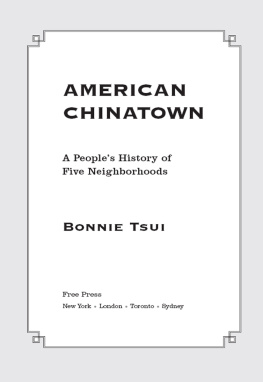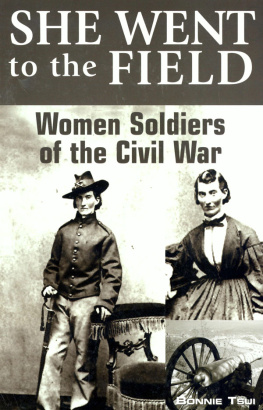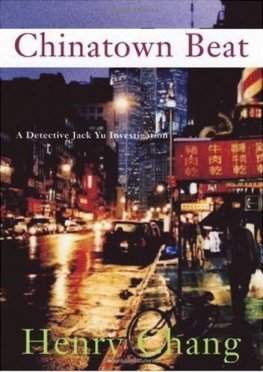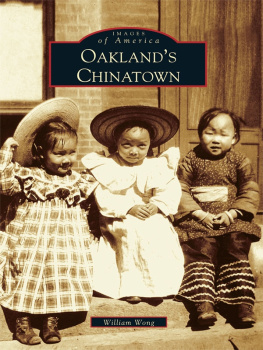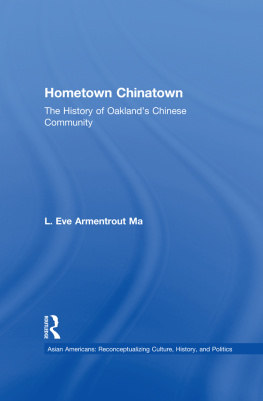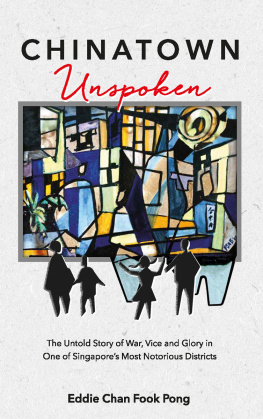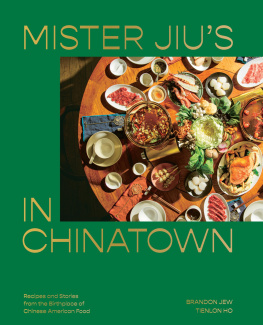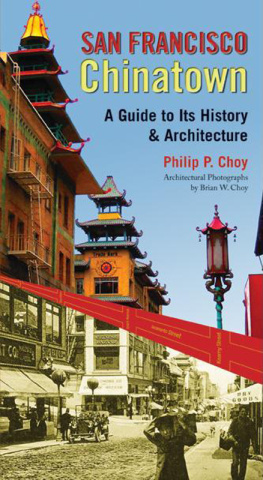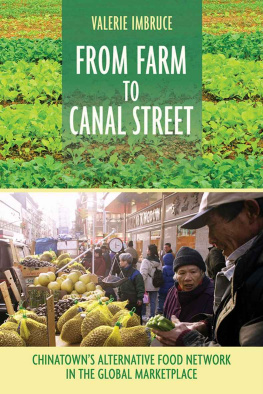

F REE P RESS
A Division of Simon & Schuster, Inc.
1230 Avenue of the Americas
New York, NY 10020
Copyright 2009 by Bonnie Tsui
All rights reserved, including the right to reproduce this book or portions thereof in any form whatsoever. For information address Free Press Subsidiary Rights Department, 1230 Avenue of the Americas, New York, NY 10020
FREE PRESS and colophon are trademarks of Simon & Schuster, Inc.
The Simon & Schuster Speakers Bureau can bring authors to your live event. For more information or to book an event, contact the Simon & Schuster Speakers Bureau at 1-866-248-3049 or visit our website at www.simonspeakers.com .
Library of Congress Cataloging-in-Publication Data
Tsui, Bonnie.
American Chinatown / by Bonnie Tsui.1st Free Press hardcover ed.
p. cm.
Free Press non-fiction original hardoverT.p. verso.
Includes bibliographical references.
1. ChinatownsUnited States. 2. Chinese AmericansSocial life and customs. 3. Chinese AmericansSocial conditions. 4. City and town lifeUnited States. 5. Chinatown (New York, N.Y.)
6. Chinatown (San Francisco, Calif.) 7. Chinatown
(Los Angeles, Calif.) 8. Chinatown (Honolulu, Hawaii) 9. Chinatown Plaza (Las Vegas, Nev.) 10. United StatesHistory, Local. I. Title.
E184.C5T834 2009
973'.04951dc22 2008055095
ISBN-13: 978-1-4165-5836-1
ISBN-10: 1-4165-5836-5
Visit us on the Web:
http://www.SimonandSchuster.com
To my grandparents,
Shau Yip Dong and Suey Lin Dong,
for beginning our familys story in
New Yorks Chinatown
CONTENTS
Personal Geography
Behind the tourist architecture.
How youth is reinvigorating the neighborhood.
Family ties pull a new generation through Chinatown Gate, but not without difficulty.
The industry of Chinatown changes New York.
Learning to read, write, and live a heritage.
What the path of the folded wafers tells us about the movement of communities.
The longtime partnership between Hollywood and Chinatown.
In an increasingly disparate community, its where the kids hang out.
Neighborhood anchors for the new arrival.
Where all mixed up is the enduring story.
How a local boy became an accidental chef.
Chinatowns disenchanted generation, on preserving the past and shaping the future.
The man who invented a new breed of Chinatown.
Beauty queens and lion dancers in the desert.
The new immigrant generation on the Strip.
Moving Pictures
I NTRODUCTION
Personal Geography
S ome people unpack when they first arrive in a city. Me, I look for Chinatown.
It started, I suppose, with my grandparents. Traveling halfway around the world from Hong Kong, they settled in Manhattans Chinatown in 1960. Even after moving to another Chinese enclave in Flushing, Queens, they kept going back, like clockwork, to their old neighborhood. Every morning they took the Q26 bus and the No. 7 subway train to the 6 train to Canal Street, where my grandfather worked in a fortune-cookie factory and my grandmother was a seamstress. Every night they brought home fresh vegetables bought from street vendors theyd come to know.
I picture a set of footprints marking a path from Queens down to Lower Manhattan, traceable on a map of the New York City transit system. When I come here today, Im keenly aware that its their route I follow.
N EW Y ORK , 1977. I am born in Flushing. My familys first apartment is a dingy affair with a leaky ceiling, and my brother is careful to pull me away from the drips. Its around this time, at the end of the 1970s, that economically depressed Flushing starts to change, departing from its roots as an Italian and Greek neighborhood to become, eventually, its own Chinatown. I never get a chance to build loyalty for my first Chinatown; before we hit school age, our parents move us to Long Island, where good public schools are a selling point. But its not where we go to be ChineseManhattans Chinatown is.
My personal history with Chinatowns begins here, where we have wedding banquets, christenings, grocery shopping, daily life with my extended family of aunts, cousins, great-uncles, fake-uncles. Everyones a relative, even when hes not.
I dont love coming here. At my height, the negatives are magnified: the filth of the streets, old takeout containers littering the gutters, sharply jostling knees. But at the childs eye level of experience, there is fascination, too. We children stick together, sidestepping dark, smelly puddles and eyeing strangers warily, but eagerly poking fingers at tanks of lobsters or plastic kiddie pools of tiny turtles imported from Hong Kong. In the narrow aisled shops, open buckets of candied plums and orange peels beckon while the grocery ladies glare. Even so, when we sidle up to the displays, they bark assent and give us a taste.
The Chinatown of my childhood occupies the same cultural epoch as Roman Polanskis eponymous film noir. I am wholly unaware of what the director has done, of his construct of some inexplicable Forget it, Jakeits Chinatown idea lurking beneath the surface that will dominate American cinema for decades. Still, because Im not entirely of that placeI have, after all, one foot in the almost exclusively white Long Island suburbia of the early 1980sI recognize the peculiarities, both small and large. Chicken feet at dim sum. A brusqueness of manner to outsiders, sizable extended families living under one roof, butting into each others business. Competitive noise.
The quirks hint at larger ideas, values, even then. Eating is about appreciating flavors and textures, whatever the vessel, and about the symbols behind themphoenix claws being luckyand is not to be limited by squeamish ideas of what is clean or dirty. A superiority is bred from thousands of years of culture established somewhere else, and not from mere snobbery or unfriendliness; investment in family protects against outsiders who threaten prejudice and misunderstanding, so that you are never alone, without a community. Finally, if you dont speak up, no one will hear what you have to say. Dai seng di Make a bigger sound, my mother says, pushing me forward into the world.
When I get my first job after college, I can walk to Chinatown for lunch every day. There is a complicated feeling inside me when I go. Im here by choice, not dragged along for some family errand or event. What am I here for, now, on my own? I feel unobtrusive, invisible, a little nervous. My tongue is rough; I have to speak Cantonese. The sounds are like an envelope, and I put myself inside it. The street is still dirty, the people still loud, pushy. But I like it. Something here is bigger than me, a history, other peoples stories that are somehow my stories, anchoring me in this city. I belong in a way that is deeper than a job or mere geography.
A few years later, I move to the East Village, also a short walk from Chinatown. I make an effort to integrate Chinatown a little more into my regular life. For a year or two, I even visit Mr. Wen, an elderly teacher on Grand Street, a couple of times a week, to learn the workday vocabulary that I never heard in my house growing up. It will help with my travel and my writing, I tell the top editor at the magazine where I work, and he agrees. He pays for my lessons with Mr. Wen.
Family friends sent their kids to Chinese school when I was growing upweekend classes in Chinatown that emphasized language and crafts and songs. It was the familiar effort to stay Chinese in a larger society that doesnt make it easy to be different. Somehow, I had escaped the requirement, and in the lazy way of youth, I was grateful at the time. But its harder to learn now, even things I want to learn. Its funny to find myself coming here voluntarily, after work, trudging up the subway steps at Grand Street station to Mr. Wen, my adult version of Chinese school.

